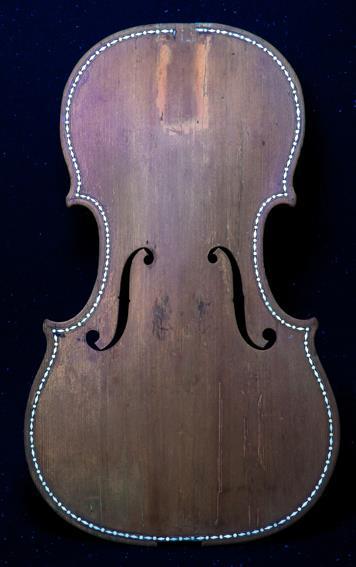
A team of scientists in Italy has completed an investigation into the purfling and decoration techniques used by Antonio Stradivari in his early period. Led by chemist Marco Malagodi of the University of Pavia, the team employed non-invasive analytical techniques to determine the dye used in the purfling, and the composition of the decorated border.
Using the top plate from a decorated Stradivari violin, part of Charles Beare’s collection, the researchers performed a spectroscopy analysis, digital microscopy and dendrochronology examinations, as well as viewing the top plate under ultraviolet light (pictured) to evaluate the remaining varnishes. According to the report, published in the June 2013 edition of Applied Physics A – Materials Science & Processing, it was found that hardly any original varnish layers remained on the surface ‘as a result of extended and inappropriate restoring’.
It was also found that the dye used to blacken the purfling was mainly composed of iron (II) sulphate, with traces of sulphates of copper, manganese, zinc and aluminium. The top plate’s decorative border was made from bone and ebony powder. The research team also made a copy of the top plate based on their findings, using materials similar to those identified on the original. They then carried out the same analyses to compare the two.
Malagodi and his team intend to continue the research on other Stradivari instruments at the new Museo del Violino, which opens in Cremona in September. The museum will contain a laboratory dedicated to investigating the techniques of the Cremonese masters. ‘We intend to continue our research into the materials and ancient techniques that Stradivari employed,’ said Malagodi. ‘This research is important as it gives us an insight into the technology available to luthiers at the time these instruments were made.’
Photo: Marco Malagodi/Claudio Canevari







































No comments yet